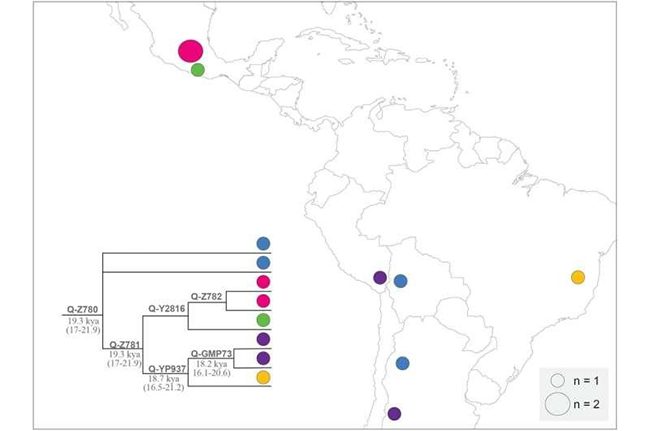Researchers have collaborated with several organizations in Argentina and found chromosomal evidence of individuals living in South America dating back 17,000 years.
The research team published a paper detailing their work and findings on the PLOS ONE website.
In recent years, scientists have found evidence that the first people migrated from Siberia to North America around 14,000 to 17,000 years ago. However, in this new effort, researchers have discovered evidence suggesting that the timeline may be slightly earlier.

The research team found chromosomal evidence of people living in South America from 18,000 years ago.
The scientific team did not search for tools or bones of the first arrivals in South America, a region believed to be where humans migrated southward through North and Central America. Instead, researchers adopted a chromosomal approach.
They collected tissue samples from 13 individuals living in Argentina, who are believed to be descendants of ancient migrants to the area. This group carries the Q Haplogroup – a Y-DNA haplogroup. It has a primary subclass. Haplogroup Q1 includes several subclades that have been sampled and identified in males from modern populations.
Q-M242 is the Y-DNA haplogroup prevalent among Native Americans and some ethnic groups in Central Asia and North Siberia, rather than the New World.
The scientists then studied the Y chromosomes of these individuals as a means to establish a timeline. The research team utilized data from volunteers and compared it with samples collected from 80 other individuals belonging to the Q Haplogroup.
These individuals live in various locations, such as the Eurasian continent. This allowed scientists to estimate the timeframe during which people in South America lived in that area to possess Y chromosomes and characteristics similar to those present today. The estimated timeframe is 18,000 years.
Researchers also found that their work indicates impacts on the lineage of people living during the Younger Dryas period (after the last Ice Age). They concluded and proposed that future work may involve tracing the lineage of people in South America while also focusing on the effects of environmental changes during that time.


















































